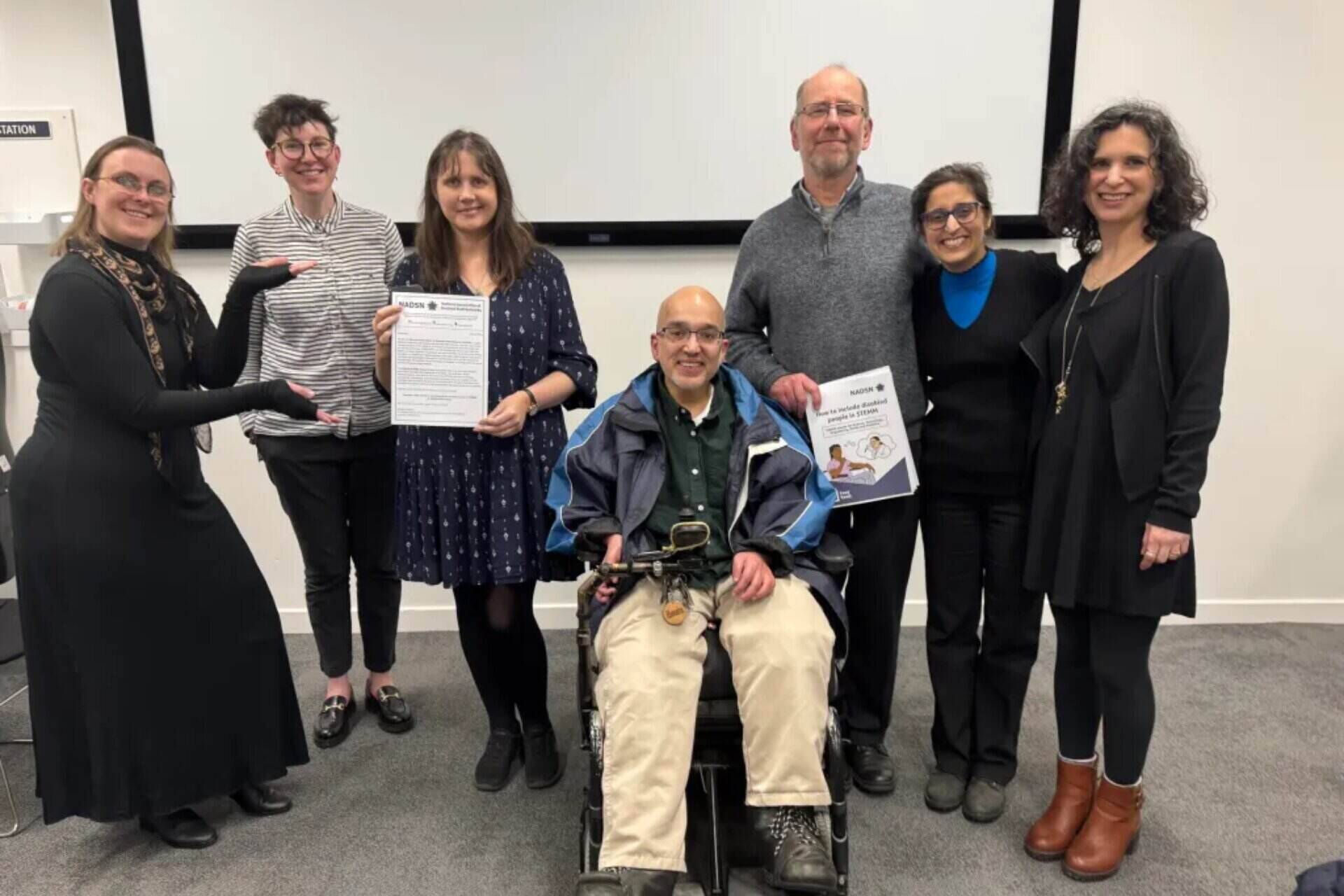
The NADSN STEMM Action Group was formed to promote diversity and dismantle systemic barriers within STEMM (science, technology, engineering, mathematics, and medicine). Professor Gayle Brewer, Professor of Psychology and Education in the Department of Psychology, spoke to us to discuss her role in this important work and the recent white paper shedding light on the experiences of disabled individuals in STEMM fields.
Could you explain what the STEMM Action Group is and what it does?
The STEMM Action Group is a key part of the National Association of Disabled Staff Networks (NADSN). NADSN is a collaborative super-network that connects and represents disabled staff networks across the UK. The STEMM Action Group specifically includes people with lived experience of disability, chronic illness, and neurodivergence who work in or around the STEMM disciplines. Our group works to raise awareness of the challenges these individuals face and to champion inclusion and diversity in research, academia, and beyond.
What’s the core mission of the Action Group?
We aim to highlight the barriers disabled individuals encounter in STEMM, celebrate the value of diverse perspectives, and advocate for lasting, meaningful inclusion. We’ve been active in contributing to high-level conversations, including providing written and oral evidence to the House of Commons Science and Technology Committee’s inquiry into diversity in STEMM.
When did you become involved?
I joined the group in 2020, during the pandemic.
What drew you to this work?
I became a member of NADSN during the pandemic and quickly felt compelled to join the STEMM Action Group. The ethos of the group, being “Nothing About Us Without Us”, resonated deeply with me. The group is driven by people with lived experience, which ensures authenticity and a focus on real, systemic change.
Tell us about the white paper you contributed to. What were the motivations behind its creation?
The white paper was developed to:
- Raise awareness of discrimination and inequity in STEMM
- Highlight the importance of inclusive environments that support disabled professionals
- Provide practical, phased recommendations for change
- Encourage understanding and action to address systemic ableism.
Ultimately, it’s about driving transformation and sharing good practice.
What are some key takeaways from the paper?
The paper includes clear, actionable recommendations, which are short, medium, and long-term, for stakeholders such as funders, learned societies, and academic institutions. It calls for a shift in culture and structures to ensure that disabled people can thrive in STEMM fields.
Any final thoughts or resources you’d like to share?
People can learn more about the NADSN STEMM Action Group and access both the full and easy-read versions of the white paper via the NADSN website. We’re also excited to be hosting a follow-up event in September at the Wellcome Trust in London, which will bring together research funders, professional bodies, and policymakers to continue this crucial conversation.